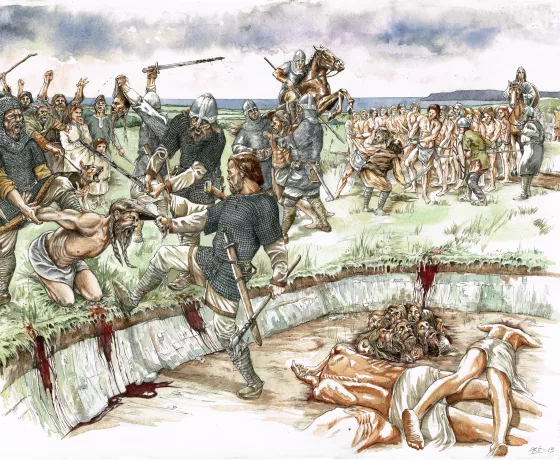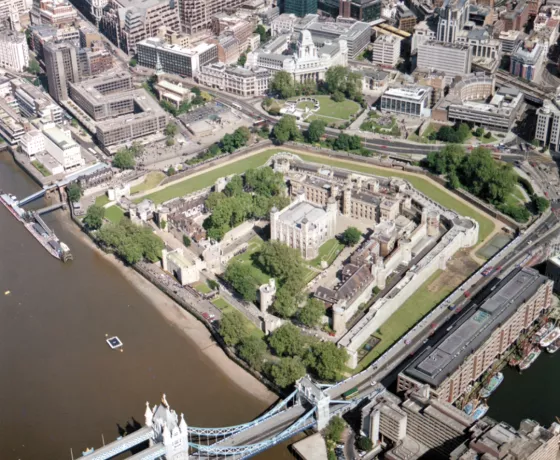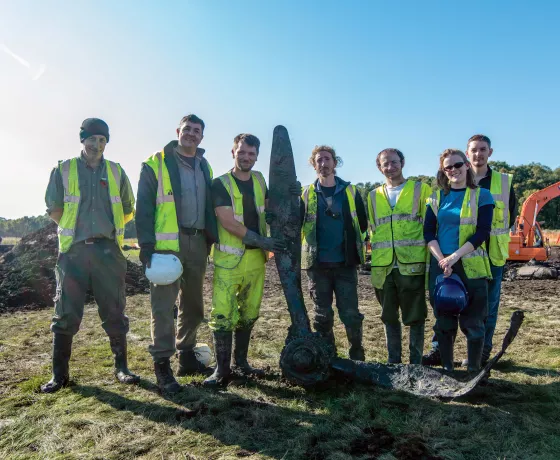We started the June highlights with a special Iron Age figurine from the Wimpole Estate, which currently features in the "Beneath our feet" exhibition at the Museum of Archaeology and Anthropology in Cambridge. A Roman bathhouse in Kent excavated during the works for HS1 marked International Bath Day. We celebrated the Summer Solstice with some stunning images from the survey of the archaeology of the Lake District carried out by the Lancaster office in the 1980s. And we ended the month with a touch of retro computing, with a look at OA's first ever computer.
Iron Age cults and hairstyles
The first June highlight took us to the Wimpole Estate in Cambridgeshire where a figurine in the shape of a man showed the Iron Age origins of the mullet hair style. If you don't believe us, visit "Beneath our feet" at the Museum of Archaeology and Anthropology in Cambridge and check out the mullet on this beautiful figurine of a worshipper.
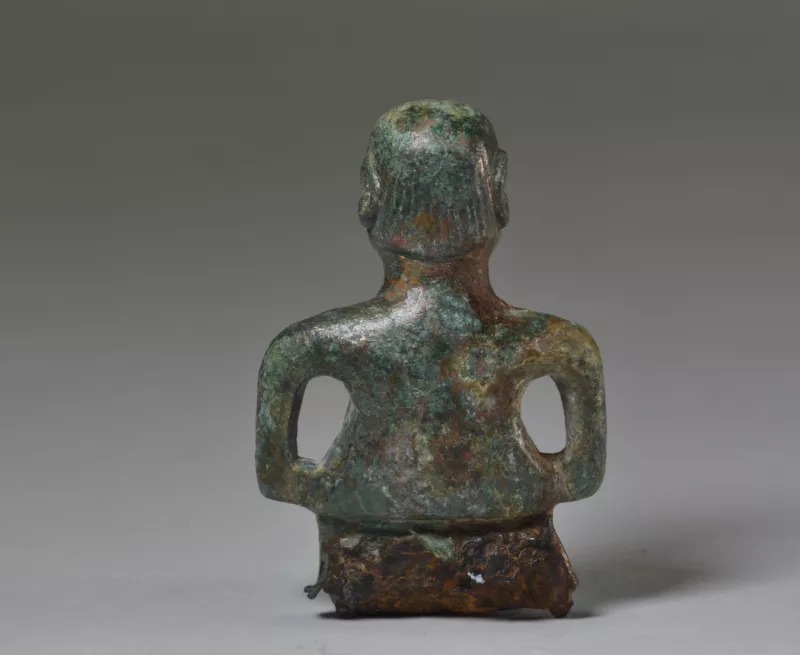
In 2018, the OA team were excavating near the National Trust -owned Wimpole Hall when they found a very enigmatic object: a copper alloy/iron spatula handle that depicts a stylised male figure bearing a torc to their chest. Spatula handles have been found before: they were quite common as they were used to mix either cosmetics or, more commonly to spread wax onto writing tablets. Most handles portrayed the goddess of wisdom and knowledge, Minerva (or Athena in Greek).
What makes this the Wimpole figurine -as it's now known- unique is that it portrays a male individual holding a torc, a neck ornament that is usually associated with Celtic warriors. So this is a Roman-inspired object found in an Early Roman site but with a distinct Celtic character.
At first our colleagues thought that the figurine could have represented the Celtic deity Cernunnos, usually portrayed as a man with antlers on his head. However, conservation work that removed dirt and rust revealed a human head with a well-tended moustache and a detailed haircut that colleagues recognised as a mullet: short at the front and longer at the back.
The "man with the mullet" handle was found with other non-ordinary objects that can be linked to votive deposits from both the Late Iron Age and Early Roman periods, like coins, brooches, a nail-cleaner, and fragments of small clay models. For this reason, the team now think that the figurine could represent a worshipper of a Celtic deity, carrying the torc as a symbol of their god and showing the latest fashion in haircuts for 1st century AD East Anglia.
The Northfleet Roman bathhouse
During works ahead of the constructionof HS1, the Oxford Wessex Archaeology joint venture excavated a beautiful bathhouse linked to a luxurious Roman villa.
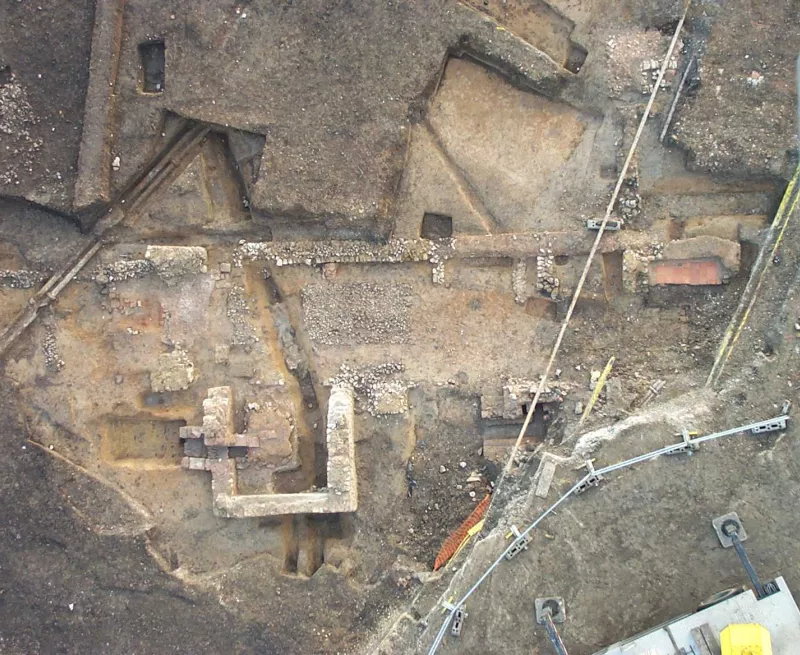
In 2000 and 2001, Oxford Archaeology, as part of the joint venture Oxford Wessex Archaeology, excavated a Roman villa at Northfleet, near Gravesend in Kent, ahead of the construction of High Speed 1.
The villa was originally excavated by W H Steadman between 1909 and 1911, and then by the Thameside Archaeological Group between 1979 and 1984, but the High Speed 1 excavations were the most extensive, exposing not only a large part of the main complex, but much of the agricultural landscape surrounding it as well.
One of the major discoveries was a well-preserved bathhouse, first uncovered by the Thameside Archaeological Group and then more fully excavated by Oxford Wessex Archaeology. It is here that much of the villa residents’ leisure time would have been spent. Built after AD 160, the bathhouse initially took a simple form, being provided with a warm room (tepidarium) and hot room (caldarium). More rooms were added over the years, so that a more complete range of rooms was present, including a changing room (apodyterium), cold room (frigidarium), sweat room (sudatorium), and cold bath. In its final form in the first half of the 3rd century, two sets of cold baths and hot rooms were provided. The rooms were ornately decorated. The floors were tiled, while the walls were coated with red, white or pink plaster. A special, distinctively pink, mortar (opus signinum) was used to keep the walls and floors watertight.
While the main house could not be re-examined, a number of finds recovered from the other parts of the villa suggested that the estate was home to the local elite who served as religious officials or councillors in the neighbouring town of Vagniacis or Springhead. There was a piece of marble flooring (opus sectile), which normally adorned luxury and palatial villas. A seal-box in the shape of a lance suggested the movement of important documents between the villa owners and the legionary staff of the provincial governor. A life-size theatrical face-mask, imported from the Rhineland, would have been associated with religious festivals or processions.
The bathhouse was not only a place for bathing and cleansing, but also a place for social gatherings involving drinking and gaming, as ceramic and glass vessels and gaming counters from the site suggest.
The Lake District National Park archaeological survey
Between 1982 and 1989, the Lancaster office of OA had the privilege to work with the Lake District National Park on a survey to identify all archaeolgical and heritage features in the landscape and establish their condition to inform plans for their future preservation. The team identified 10,000 monuments in this gorgeous landscape, including stone circles aligned with the Summer solstice.
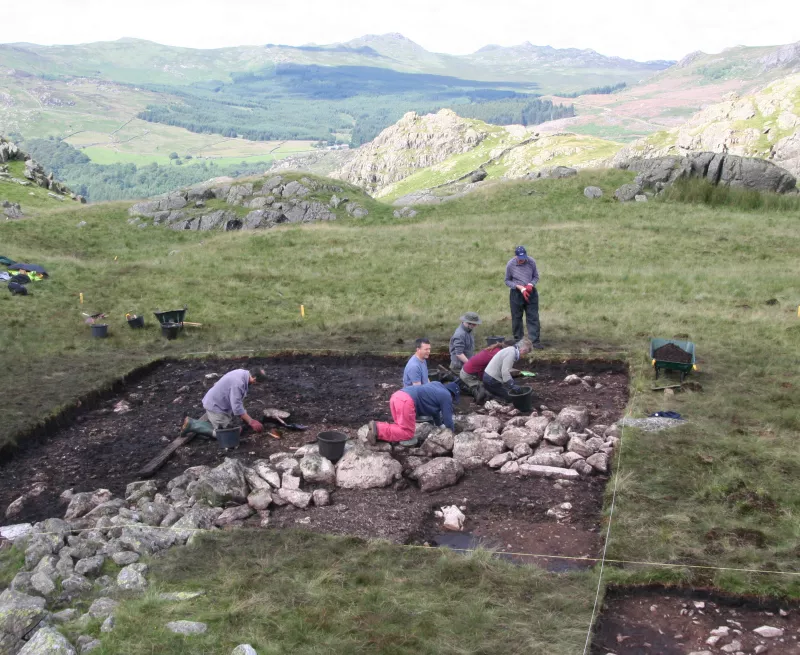
To celebrate the Summer solstice, we are presenting a wonderful project from our Lancaster office that investigated and mapped the breath-taking landscapes of the Lake District National Park! Prehistoric stone circles often spring to mind when talking about the summer solstice, thanks to famous monuments such as Stonehenge; many of which seem to be aligned on this solar event. The survey work between 1982 and 1989, was tasked with identifying upstanding monuments in the Cumbrian uplands. It also looked at how this stunning landscape was used from prehistory to the post-medieval period. The Lancaster office has published a book: Cairns, Fields, and Cultivation: Archaeological Landscapes of the Lake District Uplands (2012), detailing the results of the work, which identified more than 10,000 monuments.
There was certainly no shortage of enigmatic prehistoric monuments, such as these stone circles: particularly ‘The Cockpit’ on Askham Fell, and another on Burnmoor. However, the work also showed us a great deal more, including how our prehistoric antecedents tamed and converted the landscape of this beautiful part of the world to begin agriculture and landscape management. An abundance of Bronze Age monuments was identified, reflecting the movement of people inland from the coastal plain during a period of good climate. This included many cairn fields created by clearing the landscape for cultivation, as well as early settlements, through to more complex enclosures and field systems.
Fewer monuments dating to the Iron Age were identified: as the climate seems to have deteriorated then, and the paleoenvironmental record shows some regrowth of woodlands. Given this climatic downturn, it is likely that the uplands were less intensively utilised. the deteriorating climate resulted in less intensive use of the uplands and some regrowth of woodlands. A reoccupation during the Roman period followed, when the climate again improved, though settlement ebbed and flowed on the marginal uplands as a result of changing climatic conditions in the medieval and post-medieval periods.
These surveys demonstrated that nationally important archaeological landscapes survive on these marginal uplands. forming a palimpsest of multiple periods of activity. It enables us to see the upland landscape of North-west England within a wider framework of human occupation and exploitation, and helped the National Park to implement improved management and conservation strategies for the archaeological landscapes they oversee, for the twenty-first century and beyond.
Retro-computing: OA's Computer 0
We are so used to having the world in our smartphones that it's easy to forget how it all started...for OA, it was with Computer 0. See how Computer 0 works here
In 1982, OA was leading the charge on tech innovation in archaeology: thanks to a Government grant, OA was able to acquire and set up the 380Z, a Z80A computer made by Oxford-based Research Machines. It was a black box with a screen and no hard drive and it used enormous 8'' floppy disks (remember those?) which held only 1MB each. As the disks cost £6 each (or £20 in today's money), OA had to inform its insurers every time a new disk was bought.
The computer remained in use until 1987, when it was replaced by newer machines. However, "Computer 0" was kept safe, if unused and sometimes forgotten, on the premises. That was until OA's Head of IT Paul Miles decided to restore it and bring it back to life, a real labour of love that took a lot of time and the collaboration of other enthusiasts. The results can be seen here: Paul was not only able to revive Computer 0 but also look at some old records from the excavations at Barrow Hills, Radley, he found on one of the huge floppy disks that can still be found in OA's records.
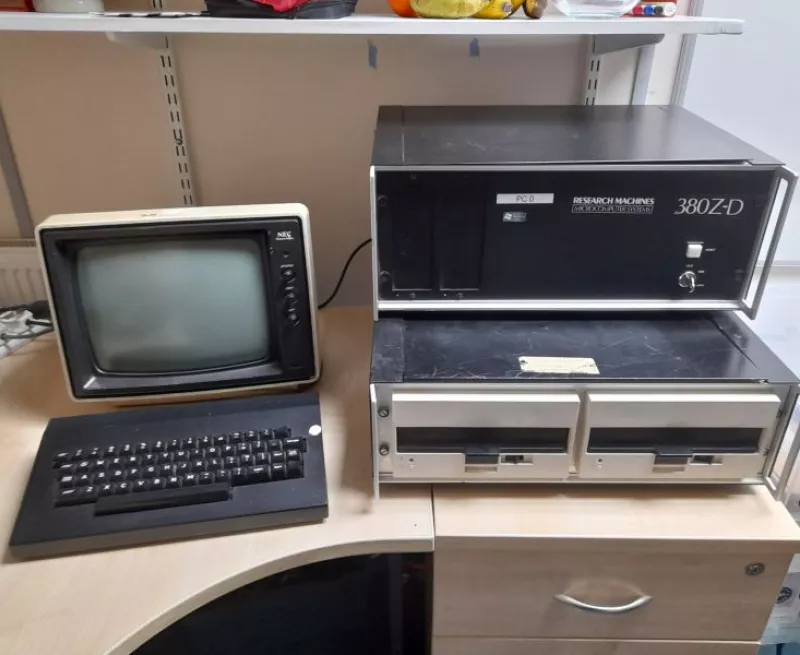
Other posts in this collection
Read the latest posts celebrating our 50th year in archaeology.


